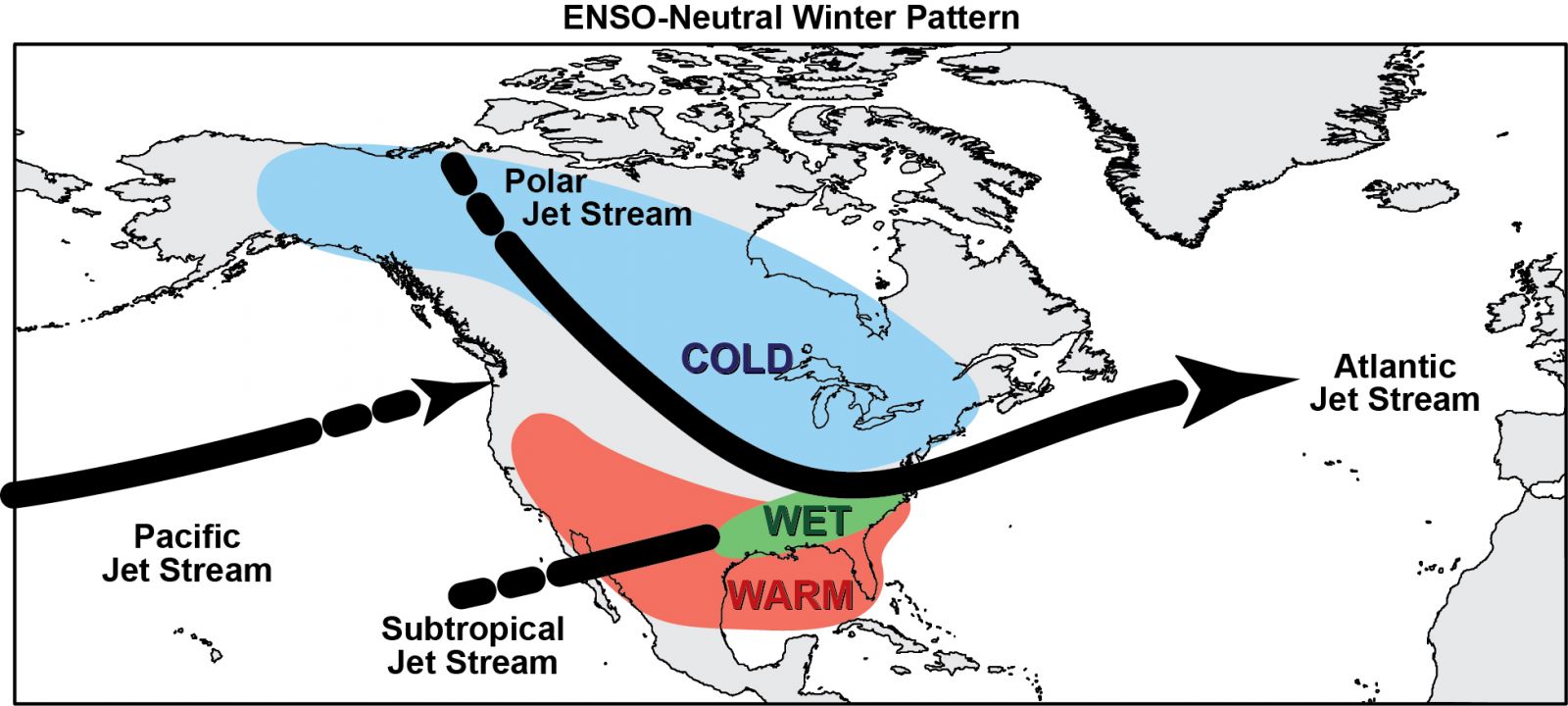ENSO Neutral Conditions
Recently, the National Oceanic and Atmospheric Administration (NOAA) announced a shift to ENSO-neutral conditions in the tropical Pacific. This transition follows the end of a mild La Niña event. ENSO, or El Niño Southern Oscillation, influences global climate patterns. About its phases is crucial for predicting weather and climate impacts worldwide.
About ENSO Phases
ENSO has three primary phases – El Niño, La Niña, and neutral. El Niño is characterised by warmer ocean temperatures in the central and eastern Pacific. La Niña features cooler temperatures in these areas. Neutral conditions occur when neither El Niño nor La Niña dominates. This phase often serves as a transitional period.
Current ENSO Neutral Conditions
As of April 2025, sea surface temperatures (SST) in the Niño-3.4 region are near average, indicating a return to neutral conditions. The SST was recorded at -0.01 degrees Celsius, warmer than the La Niña threshold of -0.5 degrees Celsius. The transition to neutral conditions resulted from warm water spreading westward and a reduction in cooler subsurface water.
Impact on Atmospheric Circulation
During ENSO-neutral conditions, the atmospheric circulation changes. Surface air pressure is higher in the central Pacific compared to the west. This pressure gradient causes air to flow from high to low pressure. This movement influences surface water currents, creating a westward flow.
Effects on Marine Ecosystems
ENSO-neutral conditions encourage upwelling of nutrient-rich waters along the South American coast. This process supports healthy marine ecosystems and enhances aquaculture. Cooler sea temperatures in the eastern Pacific contribute to relatively dry conditions in that region.
Future Projections
Forecasts indicate that ENSO-neutral conditions may persist through the Northern Hemisphere summer, with over a 50% chance lasting into autumn. However, predictions become increasingly uncertain beyond this period. There is a 43% chance that neutral conditions will extend into early winter, while the likelihood of La Niña returning stands at 38%. The odds of El Niño developing remain low, below 20%.
Historical Context of La Niña
The recent La Niña event was short-lived and mild. It did not meet NOAA’s criteria for official classification, which requires five consecutive overlapping three-month periods of cooler-than-average temperatures. Future updates to climate averages may include this event in historical records.
Month: Current Affairs - April, 2025
Category: Environment Current Affairs








